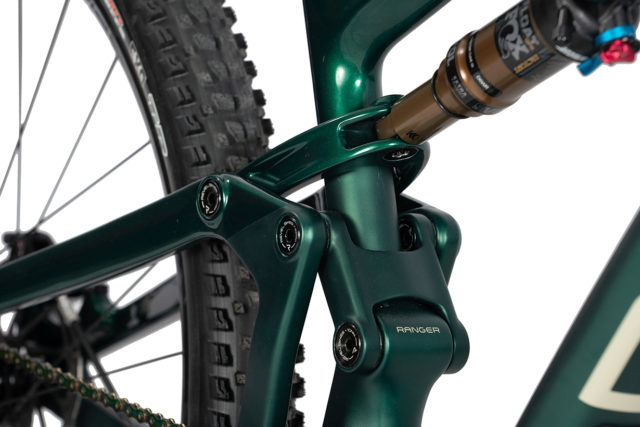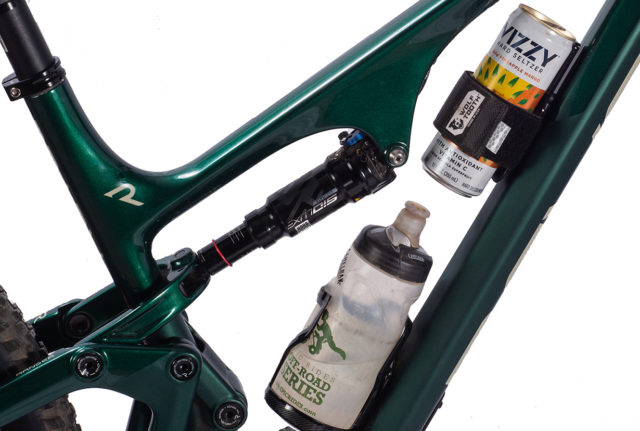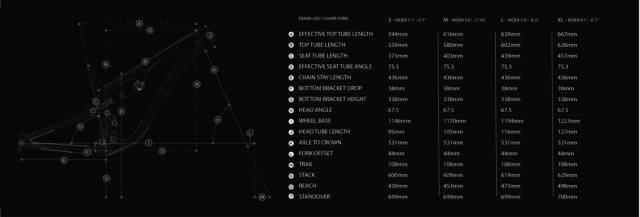2021 Revel Ranger
Geometry: See below
Wheel Size: 29”
Travel: 115 mm rear / 120 mm front
MSRP:
- SRAM GX: $4,999
- SRAM X01: $7,199
- SRAM AXS: $9,999
- Frame only w/ RockShox SIDLuxe Ultimate shock: $2,799
- Frame only w/ RockShox SIDLuxe Ultimate shock & Rockshox SID Ultimate Charger fork: $3,499

Intro
The Revel Bikes crew in Carbondale, CO has been busy. In just over a year of operations, they’ve released two bikes and one rather impressive wheelset. And today, they’re adding a whole new bike to the lineup, the Revel Ranger.
The Ranger sits below the 130mm-travel Rascal and 165mm-travel Rail (review coming soon) as the brand’s answer to the short-travel 29er market. With 115 mm of rear travel, a 120mm-travel fork, 67.5° head angle, 75.3° seat tube angle, and the brand’s promising CBF suspension design, Revel says the Ranger is designed to “enjoy the ups as much as the downs.”
If you’ve followed bike releases over the past few years, you’ll know that mountain bike geometry has become somewhat of an arms race. Whether categories of bikes with more of a gravity focus have reached “peak geometry” is a matter of debate but what isn’t up for debate is that, objectively, mountain bikes are becoming bigger nearly across the board.
That’s one of the areas where — on paper — a bike like the Revel Ranger seems to buck the trend. While some brands are highlighting that their short-travel bikes are designed to handle rough and rowdy descents, Revel is emphasizing the Ranger’s lower weight and efficiency as well as its “well-balanced” and “reasonable-yet-modern” design. Given that they already have two other bikes that are positioned more on the descending-oriented end of the spectrum, that seems to make sense, but let’s take a closer look at the Ranger’s design to see how it compares to Revel’s other bikes as well as the broader short-travel market.
The Frame
Revel immediately points out that the all-carbon Ranger frame is not just a Rascal frame with less travel — it is an all-new design that reportedly shaves off more than a pound of weight from the frame of the Rascal. I actually called Revel to confirm this detail since it’s one thing to shave off a pound from a full build, but it’s a different animal to shave off a pound from the frame alone.
That said, Revel assures interested parties that the new frame is tough enough to inspire confidence on the descents. Revel doesn’t say much in their release regarding how that toughness is accomplished, given the frame’s significantly lower weight than its stablemate, but you can learn more about their approach to carbon bike frames in episode 101 of our GEAR:30 podcast with Revel founder, Adam Miller.
The suspension design on the Revel Ranger is the same CBF — “Canfield Balance Formula” — design that is used on Revel’s other models. CBF is most similar in theory to a Virtual Pivot Point suspension linkage and centers around a concept that the Canfield Brothers call Center of Curvature. Essentially, the instant center (aka, the point in space where the rear axle is rotating about at any given point in the bike’s travel) moves throughout the range of travel, and the Center of Curvature is the point in space at which all the points of instant center intersect. The CBF linkage positions the Center of Curvature (again, the intersection of all the instant-center points) right above the bottom bracket.
The on-trail result of all that is that Revel and Canfield claim that this linkage design results in maximum pedaling efficiency regardless of terrain, where you are in the bike’s travel, or how much power you’re putting down. But they also claim that the CBF linkage makes for a bottomless feel, and this combo seems like it could be particularly appealing in a more efficient, short-travel bike like the Ranger. Efficient pedaling while still offering a “bottomless” feel with lots of traction sounds pretty appealing, in theory.

That’s a lot to ask of a suspension design and you can hear more about CBF in episode 25 of our Bikes & Big Ideas podcast with Adam Miller. But as of right now, we will note that our reviewer Eric Freson has come away very impressed by the Revel Rail’s suspension so far in his testing of that bike. So we’re very curious to see how it’ll pair with a shorter-travel bike like the Ranger.
The Ranger frame also features fully encased internal cable routing for easier setup, and based on its inevitable use as a go-fast uphill bike, routing for a cockpit-mounted, rear-shock lockout.
Revel is also including three bottle-cage mounts on the down tube of the Ranger. There are two mounts inside the front triangle and one outside the triangle on the underside of the down tube closer to the bottom bracket. Revel is calling the mount the upper part of the down tube an “accessories mount,” though as you can see below, you could potentially fit some smaller beverages using that mount…

The Ranger frames have a threaded bottom bracket with English threads (73 mm), come with a custom chain guide, and reportedly offer enough tire clearance for 29″x2.6″ options. Colors include a forest green called “Johnny Green Jeans” and a graphite black called “De La Coal.”
Lastly, like all Revel bikes, the Ranger frame has a lifetime warranty against manufacturing defects for the original owner.
The Builds
As of publishing this First Look, Revel is offering three full Ranger builds priced at $4,999, $7,199, and $9,999. You can also purchase the Ranger frame with the RockShox SIDLuxe Ultimate shock for $2,799, or get the frame + shock and RockShox SID Ultimate Charger Race Day 120 mm fork for $3,499.

The three full Ranger builds use SRAM GX Eagle, SRAM X01, and SRAM XX1 AXS as the base drivetrain, respectively, and will come with the newly released Eagle 10-52 cassettes and associated rear derailleurs. Also of note in the drivetrain department, the stock chainring on the Ranger drivetrains is a 32T ring with a choice of 170 mm or 175 mm crankarms.
For suspension, all Ranger builds use RockShox’s revised SID line, with the SID Select level being used for the GX build and the SID Ultimate level on the X01 and AXS level builds. All shocks are 190 mm x 45 mm and all forks are 120 mm travel with 44 mm offset.
The SRAM / RockShox theme continues across the builds with the stoppers. The Ranger builds use SRAM G2 brakes across the board with the three builds having the R, RSC, and Ultimate versions of the G2, going from the GX to the AXS build, respectively. Rotors are 180 mm up front and 160 mm in the rear on all builds.
For wheels, the GX build features Industry Nine Enduro S alloy wheels with Industry Nine 1/1 hubs. The X01 build steps up to the Revel RW30 composite rim while keeping the Industry Nine 1/1 hubs. And at the top end, the AXS build switches out the Industry Nine 1/1 hubs for Industry Nine’s top-of-the-line Hydra hubs while keeping the RW30 composite rim. We’ve had a chance to spend quite a bit of time on the RW30 wheelset with Hydra hubs and came away very impressed. All Ranger builds will come with the Maxxis Dissector 29 x 2.4” Exo on the front and the Maxxis Rekon 29 x 2.4” Exo on the rear, which are fairly descent-oriented rubber options for a bike in this travel class.
There are a few other interesting aspects of the Ranger builds that are worth quickly noting. First of these is that the GX build will have a 35 mm clamp stem and bar combination while the X01 and AXS builds will have a 31.8 mm stem and bar. Second, the dropper post on the GX build is a Crank Brothers Highline 7 while the X01 and AXS builds have two different levels of the RockShox Reverb.
For reference, here are the details of all three full Ranger builds currently on offer:

Geometry
One look at the geometry of the Ranger and you’ll see that Revel isn’t necessarily reinventing the wheel in terms of numbers and angles. The head tube angle of the Ranger is 67.5° and the effective seat tube angle is 75.3° on all sizes. Reach on a size Medium is 453 mm and the wheelbase on that same size is 1170 mm. Chainstay length is 436 mm across all sizes.
At first glance, particularly in light of recent Trail bike releases, those numbers seem pretty conservative. But then I took a quick peek at an aggressive Trail / Enduro bike from the 2018 model year, the now “old school” Yeti SB5.5. In a size Medium, that bike had a 1168 mm wheelbase, 73.6° seat tube angle, and 66.5° head tube angle.
That comparison is just my way of illustrating that what we characterize as a short-travel, more XC-oriented bike these days now has surprisingly similar geometry to a bike that won a few Enduro World Series events not so long ago.
Still, Revel isn’t necessarily trying to push the limits of geometry with the Ranger. Case in point, another bike in this category of travel, the fourth-generation Santa Cruz Tallboy (120mm-rear-travel 29er), has relatively similar numbers to the Ranger, but with a significantly slacker head angle at 65.7° for Tallboy.
Going further down the geometry rabbit hole, compare the Ranger to Revel’s own do-anything, mid-travel 29er, the Rascal, and you start to get a clearer picture of how the team at Revel views bike geometry. The Ranger and Rascal differ by 1.5° looking at the head angle and 0.3° for the seat tube angle, with the Rascal being the slacker bike in both measurements. The chainstays on the Rascal are also 3 mm shorter. Point being, Revel doesn’t seem to be focused on making their bikes extremely long or slack, and that in itself does make the Ranger stand out from some of the shorter-travel rigs we see these days with Enduro-esque geometry. While some like that sort of geometry in their shorter-travel bikes, those who do not want a super long and slack 115mm-travel bike may find the Ranger’s numbers more appealing.
The Ranger is offered in sizes Small through Extra Large, with Revel claiming those sizes cover riders from 5’1” to 6’7”.
For reference, here’s the whole geo chart for the new Ranger:
Some Questions / Things We’re Curious About
(1) The Ranger’s frame is significantly lighter than its 29er stablemate, the Rascal. That should be noticeable on the up, but will it also result in any noticeable differences in terms of ride quality and durability?
(2) The stock tire selection (Maxxis Dissector & Rekon) for the Ranger is pretty robust for an XC-oriented bike. Will that play a big role in how the Ranger compares to similarly shorter-travel bikes on the ups and / or downs?
(3) Several other bikes in the short-travel 29er category have adopted longer and slacker geometry than the Ranger. So will the Ranger feel significantly more nimble? And what about when you take it down some steeper, rougher terrain?
(4) The CBF linkage has been well-received on the long-travel Rail and mid-travel Rascal thanks to its combo of efficiency and traction, so how will it translate over to a shorter-travel bike?
Bottom Line (For Now)
The Revel Ranger is billed as a short-travel 29er that climbs as well as it descends, and vice-versa. This is a clearly differentiated model in the young brand’s lineup and one that we are excited to try as a light and nimble option for riders who might not want the weight or travel of Revel’s other offerings. We’re hoping to get on a Ranger this summer, so if / when that happens, we’ll report back with a full review.


Looks like a fun ripper. Locally, riders talk of clunking suspension issues on the Rascal. Maybe Revel could weigh in?
Personally, I like that their short-travel bike does NOT have enduro geometry. I’ll take that on my longer travel bikes.
Id been keen to see a shoot out with this and the the new Trek Top Fuel 115r/120F. Really similar bikes when it comes to geo and intentions.
Agree! And since I’ve got an XL Top Fuel 9.9, all we need is for Mr. Ellsworth to ship me the Revel and I’ll get down to comparing the two!
Anyone see mention of frame weights?
*just saw bike rumor listed 6.1lbs w/shock for a medium. Nearly as portly as a Tallboy 4.
Interesting and it looks so well sculptured. Love that green!!! I’ve got this on the short list as well as the new Specialized Evo 2021 and Salsa. However the Evo frame with shock comes in at 4.3lbs and the fork is 1 degree slacker, but the seat is 1 degree slacker too. I’m thinking the ranger should feel better in the suspension department though with the CBF suspension design. Talking of that clucking sound, I believe the Specialized Epic brain has that issue when activating and it is a real put off.
I’m in the same boat as most, looking at the S Works EVO vs Revel Ranger vs Yeti SB115 and Ibis Ripley. Also, Can you increase the Sid Fork to 130mm?
Tried the rascal a couple of days ago and the ranger this morning.
I’m definitely not a fan of the modern geometry.
The ranger suited me perfectly. Excellent balance between old and new school. It is a rocket on the uphills, super comfy and rips on the downhills.
I cannot say enough good things about the Revel ranger.
I ordered a frame and fork in July and have yet to see it. Has anyone actually taken delivery of this frame or a fully built bicycle?